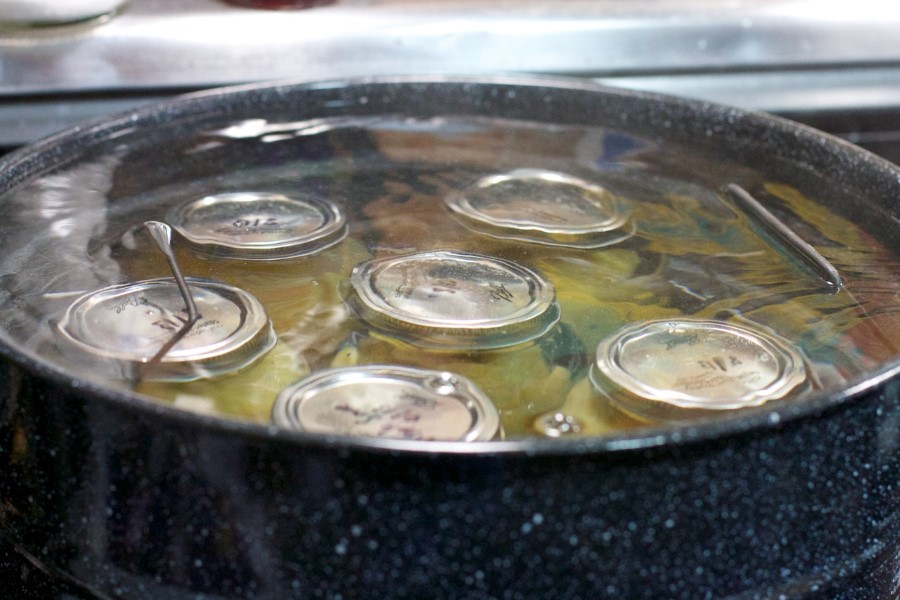There seems to be a lot of mystery and anxieties that people new to canning struggle with. It really is quite simple as long as you consider just a few key points, first up, the difference between pressure canning and water bath canning and secondly, when it is necessary to use each one.
Table of Contents
What Is Canning?
The process of canning is simply to package food in jars to preserve them. This means a jar of food can sit on a shelf without refrigeration and still be good months or even a year later.
Special canning jars with 2 part lids are used to package the food being canned which create a vacuum seal and minimise the risk of oxidation.
The canning jars are placed in a water bath and heated which cooks the contents at the same time as sealing the jars so they are airtight.

Types Of Canning
There are two types of canning, water bath canning and pressure canning. If you understand the process of each one it begins to clear up why and when each method is necessary.
Ensuring you are canning correctly makes the process very safe. I always refer to the USDA guidelines on what is acceptable.
Food hygiene is especially important, jars need to be clean and sanitised and you need to follow a trusted recipe.
Water Bath Canning
Water bath canning is the simplest and most accessible of the two canning methods. There is not a lot of equipment required, all you need is some canning jars and a pot big enough to place them in.
Dedicated canning pots usually come with racks to place jars on in the pot as well as accessories like jar lifters.

A boiling water bath is set up for your canning jars which are sealed and then completely immersed in the boiling water bath for a specified amount of time.
Your recipe should specify times for boiling water canning and if it doesn’t I would suggest finding another recipe.
This method of canning is suitable for more traditional preserves, things like jams, chutneys and pickles which all share a higher level of acidity. The acidity either comes from the produce itself, such as some fruits which are acidic or from added acidity in the form of vinegar or acidic fruit juice.
Pressure Canning
Pressure canning requires specialist equipment in the form of a pressure canner.

A pressure canner is not a pressure cooker but works in a similar principle. Water is heated in a sealed vessel which means the temperature rises above a normal boiling point.
Jars are sealed in the pressure canner in just a few inches of water and the temperature rises to around 115°C – 121°C / 240°F – 250°F.
This higher temperature is more effective than water bath canning and means a wider range of foods can be canned
Unlike boiling water bath canning which requires the food being canned to be highly acidic, pressure canning means foods that are not as acidic such as meat, fish, poultry, tomatoes, carrots, green beans and garlic can be processed in a safe way.
Acidity When Canning
As a general rule, the method of canning you need to use is dictated by the foods that you are intending to can. In particular, the acidity of the produce.
Water bath canning is suitable only for acidic foods. This is often only food that has been processed in some way before being canned.
Jams, jellies, chutneys, pickles are cooked before being canned and in most cases are acidic so these are the most likely candidates for being water bath canned.
Acidity Determines Method Of Canning
Low acid foods are usually things like vegetables or fruits, stock or broth and casseroles with meat in. These are foods that need to be pressure canned.
Acidity is a method of food preservation in itself. An acidic environment makes it difficult for bacteria or microbes to survive so hot water bath canning has two methods of preservation, heat and acidity.
For foods that are not acidic you need a higher temperature to prevent the growth of bacteria and this can only be achieved when cans are processed under pressure.
Always Refer To A Trusted Recipe

I would always advise using a good recipe when you are canning anything intended to last for long periods.
Good recipes specify what method of canning to use, processing times and should be tried and tested so you know that they are safe and at the end of the day are going to be tasty, which is what we want.
Don’t Guess At What Canning Method To Use
It is easy to mistake things as being acidic when they are not. Tomatoes, onions, garlic and things that we think of as being quite acidic are not always acidic enough to can in a boiling water bath.
This is why you should always refer to a recipe.
Can You Use A Pressure Cooker For Canning?
A pressure cooker is NOT suitable for canning
A pressure canner may be more expensive, however, they are much more consistent and accurate at holding temperature and pressure.
It is pressure and temperature that are key for making canned foods safe so investing in a proper pressure canner is necessary.



